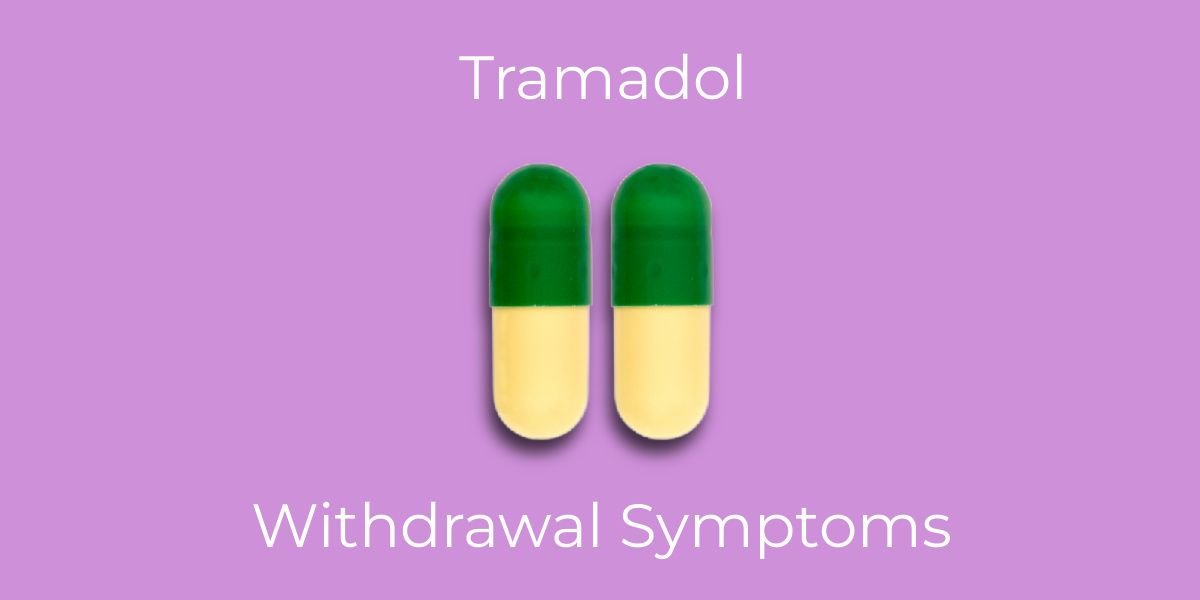Tramadol is a prescription opioid painkiller used to treat chronic pain and during surgeries. It is considered less potent, and therefore less addictive, than other opioids such as oxycodone, though the potential for abuse, dependence, and addiction still exists.
- Tramadol is only a schedule IV, meaning the DEA classifies it as having a lower risk of abuse and addiction than other opioid medications.
- Tramadol is used to treat long-term or chronic pain conditions as well as post-surgery pain relief.
- Once tolerance levels for tramadol have reached the point where the user can no longer operate normally or feel good without the drug, they will be deemed physically dependent on it.
.jpg?v=1722502026)
Understanding Tramadol
Tramadol is a synthesized prescription opioid painkiller similar to tramadol. It is used to treat conditions that result in chronic pain, such as fibromyalgia and arthritis, as well as pain relief after invasive surgery or accidents.[1] Like other opioid painkillers, tramadol works by binding to opioid receptors in the brain and blocking incoming neurotransmitters that register pain. Tramadol is often sold under the brand names Ultram, Ultram ER, conZip, and Ryzolt. While a strong medication that is only available on prescription, tramadol is widely considered less potent than other opioid painkillers such as fentanyl.
While it is considered less potent than other synthetic opioids, tramadol still holds the potential for abuse, dependence, addiction, and overdose and shouldn’t be taken without a prescription or in any way outside of a medical professional’s recommendation.
Tramadol uses
Tramadol belongs to the class of medications known as opiate analgesics, used to change how the brain responds to pain signals. Tramadol is used to relieve those suffering from moderate to severe pain, often used after surgery or for chronic pain conditions.
Tramadol comes in many forms. The standard tablet and liquid solution are taken with food every 4-6 hours and are often used for those who do not have chronic pain conditions. Tramadol also has extended-release capsules and tablets that are meant for those who need round-the-clock pain relief. Extended-release tramadol medication should only be taken once per day with or without food.
Tramadol dosage
Tramadol comes in tablet form of various strengths, 50mg, 100mg, 150mg, 200mg, and 300mg; all to be taken orally. There is also a long-acting version that is not intended to be taken on an as-needed basis. Like all other opioids, tramadol should not be taken in conjunction with other opioids.
Tramadol is used in most cases to treat moderate pain and is not as potent as some other forms of opioid pain medication, such as oxycodone or fentanyl. Different forms of tramadol have varying strengths and can be fast-acting or slow-release, depending on the needs of the patient.[1]
The tramadol content of each form of medication is listed below:
- fast-acting tablets – 50mg of tramadol
- fast-acting capsules – 50mg of tramadol
- slow-acting tablets – 50mg, 75mg, 100mg, 150mg, 200mg, 300mg or 400mg of tramadol
- slow-acting capsules – 50mg, 100mg, 150mg or 200mg of tramadol
- drops that you swallow – 100mg of tramadol in 1ml of liquid
- Soluble tablets – 50mg of tramadol
- tablets that dissolve in the mouth – 50mg of tramadol
Most people who are prescribed tramadol will start on a low dose and be monitored by a doctor to see how well they react to the medication. The dose will be increased or decreased depending on the patient’s level of pain and how they react to pain stimuli.
Side effects of tramadol misuse
Tramadol is used to treat long-term or chronic pain conditions as well as post-surgery pain relief. It is often considered a safer alternative to more potent opioid painkillers with a lower risk of abuse, dependence, and addiction. However, as with all forms of opioid medication, the potential to develop a dependence on tramadol still exists if the drug is abused or taken outside of the prescribed amount.
People will often abuse tramadol for its calming and euphoric effects. Many people who have been prescribed the drug for chronic pain conditions may inadvertently begin to abuse the drug by taking higher doses as their brains develop a tolerance to their prescribed amounts. This can lead to potentially life-threatening side effects such as respiratory failure and seizures.
Other side effects of tramadol abuse include[4]:
- pinpoint pupils.
- sleepiness.
- difficulty falling asleep or staying asleep.
- headache.
- nervousness.
- uncontrollable shaking of a part of the body.
- muscle tightness.
- mood changes.
- heartburn or indigestion.
Tramadol abuse greatly increases the likelihood of developing an addiction to opioids and may result in requiring more potent or illicit substances. If abused in high quantities, there is also the chance of experiencing a tramadol overdose.
As a central nervous system (CNS) depressant, tramadol slows down lung and heart function. Those who take very large doses of Tramadol (much higher than what would be prescribed) can stop breathing altogether and may experience a fatal overdose.
Tramadol overdose
Like other opioid prescription medications, tramadol is a central nervous system (CNS) depressant that, when misused, drastically reduces respiratory function, lowers heart rate, and affects blood pressure. Some of the symptoms of a tramadol overdose include:
- Unconsciousness.
- Muscle weakness.
- Sweating.
- Lung depression.
- Coma.
- Low blood pressure.
- Lowered heart rate.
- Death.
Opioids are the leading cause of drug overdose in America today. A tramadol overdose can be counteracted by Naloxone if administered fast enough, potentially saving lives.
Tramadol use disorder
While tramadol is less potent than other opioid drugs, making the potential for abuse supposedly lower, there is still the possibility of dependence and addiction forming.
As tramadol directly influences levels and production of serotonin in the brain (responsible for our innate pleasure and reward system), there is the potential for tolerance to the substance to build if misused. Once tolerance levels have reached the point where the user can no longer operate normally or feel good without the drug, they will be deemed physically dependent on it.
The negative consequences of tramadol dependence are what lead to an addiction diagnosis. These negative consequences can include:
- Using tramadol more frequently.
- Avoiding responsibilities to use tramadol.
- Giving up other activities to use.
- Feeling cravings for tramadol when not using.
- Having withdrawal symptoms from the drug when use stops.
What leads someone to become addicted to tramadol has links to genetic, environmental, and psychological factors; all of which present themselves differently from person to person. There is no one direct cause of addiction, and anyone who misuses substances such as tramadol may become addicted.
Tramadol withdrawal symptoms
When someone has developed a dependence on tramadol, stopping use abruptly (going cold turkey) can lead to uncomfortable and painful withdrawal symptoms. These symptoms are what often prevent people who abuse opioid painkillers from being able to quit using them and are a telltale indicator of addiction.[5]
Common symptoms of tramadol withdrawal include:
- Headaches
- Insomnia
- Muscle aches
- Fever
- Nausea
- Vomiting
- Sweating
- Stomach pains
- Dehydration
- Cravings
What affects tramadol withdrawal?
While tramadol is less potent than other opioids such as oxycodone, withdrawal symptoms from tramadol can still be dangerous depending on a person's physical and psychological history.[5]
Factors that can affect tramadol withdrawal:
- Your health.
- Your age.
- Genetics.
- Your mental health.
- Your other drug use.
- Your history of substance abuse.
Tramadol withdrawal timeline
Symptoms of tramadol withdrawal usually begin to present themselves within 48 hours of the last dose and are at their peak at 72 hours. Most people will experience the worst of tramadol withdrawal within a week, and with medical detox, can be through it completely within two weeks. It is always recommended that a medically assisted detox be carried out to manage withdrawal from opioid drugs safely.
Tramadol detox
Quitting tramadol abuse can be done cold turkey but can put the body and mind under considerable strain. It is recommended that a person with a tramadol addiction attends a medically supervised detox in either an inpatient or outpatient treatment center. This will ensure that any discomfort is kept to a minimum and can allow for a long-term treatment program to be developed to ensure ongoing recovery.
Some people have been able to successfully stop tramadol abuse by tapering off the drug. This entails slowly reducing the amount of the drug taken over a period of time to mitigate withdrawal symptoms. Occasionally, other opioid drugs such as suboxone can be used in place of tramadol to successfully taper off the drug and remove it from the system.
Tramadol & polysubstance use
Opioid painkillers like tramadol are often used in conjunction with other substances to boost the effects or create new effects. This method of substance abuse, known as polydrug use, is extremely dangerous and greatly increases the risk of accidental overdose. It also increases the chances of an addiction developing as the effect on the brain is greatly exacerbated.
Common tramadol drug combinations
Tramadol and Tylenol - The active component of Tylenol, acetaminophen, also acts as a pain reliever and is not considered to be addiction-forming. However, when consumed in high volume, acetaminophen can cause damage to the liver. [6]
Tramadol and alcohol - Alcohol acts as a CNS depressant much like tramadol does and taking the substances in conjunction with each other increases euphoric and calming effects. This drug combination can lead to lung depression and lowered heart rate, increasing the risk of overdose.
Tramadol and benzodiazepines - Like opioids and alcohol, the sedative-hypnotic effects of benzodiazepines increase the feeling of calm when taken with tramadol but also increase the risk of respiratory depression and seizures.
Tramadol addiction treatment
Like all forms of addiction, tramadol addiction can be treated with specialist help. No one form of treatment is right for everyone, nor is there one form of treatment for all substance addictions. Speaking with a treatment provider, addiction specialist, or doctor can help to assess which type of treatment is right and help you or a loved one begin their journey to recovery.




-guide-detail.jpg?v=1722502204)
